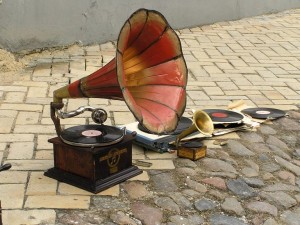Who Invented Gramophone First
In the 19th Century, there was fierce competition in Europe and the USA to create machines that could record and playback music and sounds. As early as 1857, the phonautograph, created by Édouard-Léon Scott de Martinville, used a diaphragm attached to a bristle that responded to sound vibrations.
These vibrations were traced onto a sheet of paper coated in soot, which was wrapped around a rotating cylinder. This, however, could not play back the recording.
In 1877, Thomas Edison’s phonograph followed a similar principle to the phonautograph, but used tinfoil wrapped over a grooved cylinder. The vibrations of a needle attached to a diaphragm and horn made indentations in the foil, and to play it back the needle retraced the indentations in the foil. Wax cylinders enabled such recordings to be played back more than once.
Ten years later, Emil Berliner introduced the gramophone that used discs with a spiral groove, rather than a cylinder to record and play back the sound. It still used a horn and needle, but unlike cylinders, the master recording could be easily copied onto a mould and mass-produced. The gramophone came to dominate the market in the Twenties, superseded by the electronic record player.
![Gramophone]() Anatomy of a gramophone
Anatomy of a gramophone
Pickup head – The needle on the pickup head was commonly made of copper or steel. The needle is attached to a diaphragm that sends the sound vibrations to the horn.
Turntable – This is rotated at a constant speed by a wind-up clock-work mechanism. They usually operated at a speed of 78rpm.
Horn – Amplifies and projects the sound from the needle (stylus). A ball or material was put into the horn to reduce I the sound from the horn.
Spindle – The hole punched in the centre of the record disc is placed over the spindle. This keeps the record from spinning off the turntable as it rotates.

